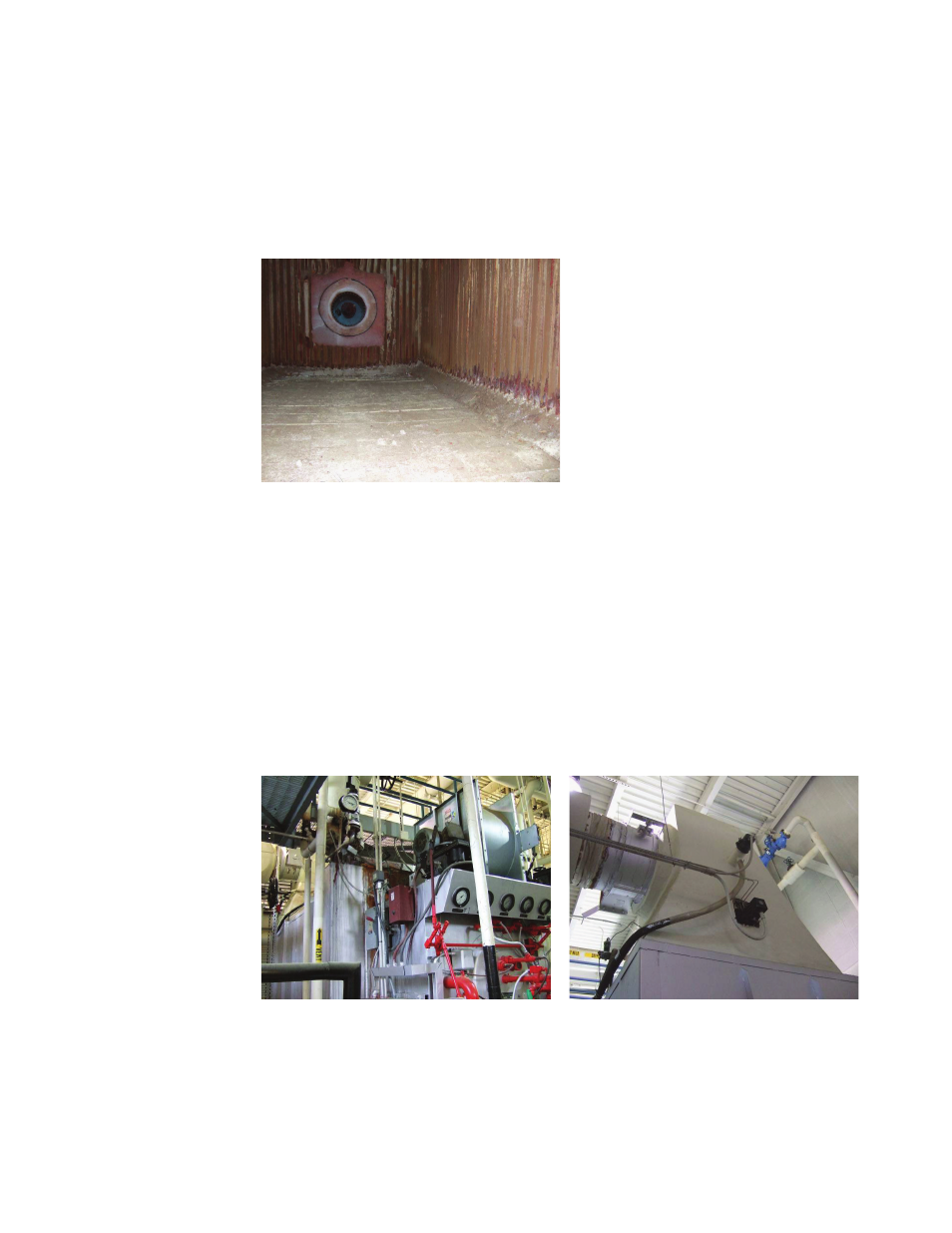Retrotec USACE User Manual
Page 178

D48 ENERGY & PROCESS ASSESSMENT PROTOCOL
need it (Figure D77). A proper amount of insulation would result in the tem-
perature of outer surfaces of the heating system components being no greater
than 51.7 °C (125 °F). This not only an energy-saving concern, but a safety
concern—to avoid skin burns. Surfaces warmer than this temperature should
be investigated for addition insulation.
D.4.1.8 Dirty Burners (Ineffi ciency)
Figure D78. Looking at burner from inside
boiler.
Boilers and furnaces use burners for the combustion of natural gas or fuel oil
needed to generate the required heat (Figure D78). These burners are de-
signed to provide the proper mix of oxygen (air) and fuel to obtain optimum
combustion. If too much oxygen is mixed with the fuel, excessive air is heated
for the energy produced, which is wasteful. If too little oxygen is used, not all
the fuel is converted to heat, and soot can form on the inside of heat exchanger
surfaces. Not burning all the fuel is wasteful, and the presence of soot will in-
crease the resistance to heat transfer. The burner has nozzles and ports sized
for mixing the fuel and air, which should be cleaned periodically and replaced
when required.
D.4.1.9 Improper Operating Dampers (Ineffi ciency)
Figure D79. Direct drive induced draft fan on
boiler.
Figure D80. Damper in boiler breeching to
stop air fl ow when not operating.
Boilers need the proper amount of oxygen (air) for optimum combustion and
effi cient operation. Thus, there is air fl ow to the burner and exhaust of com-
